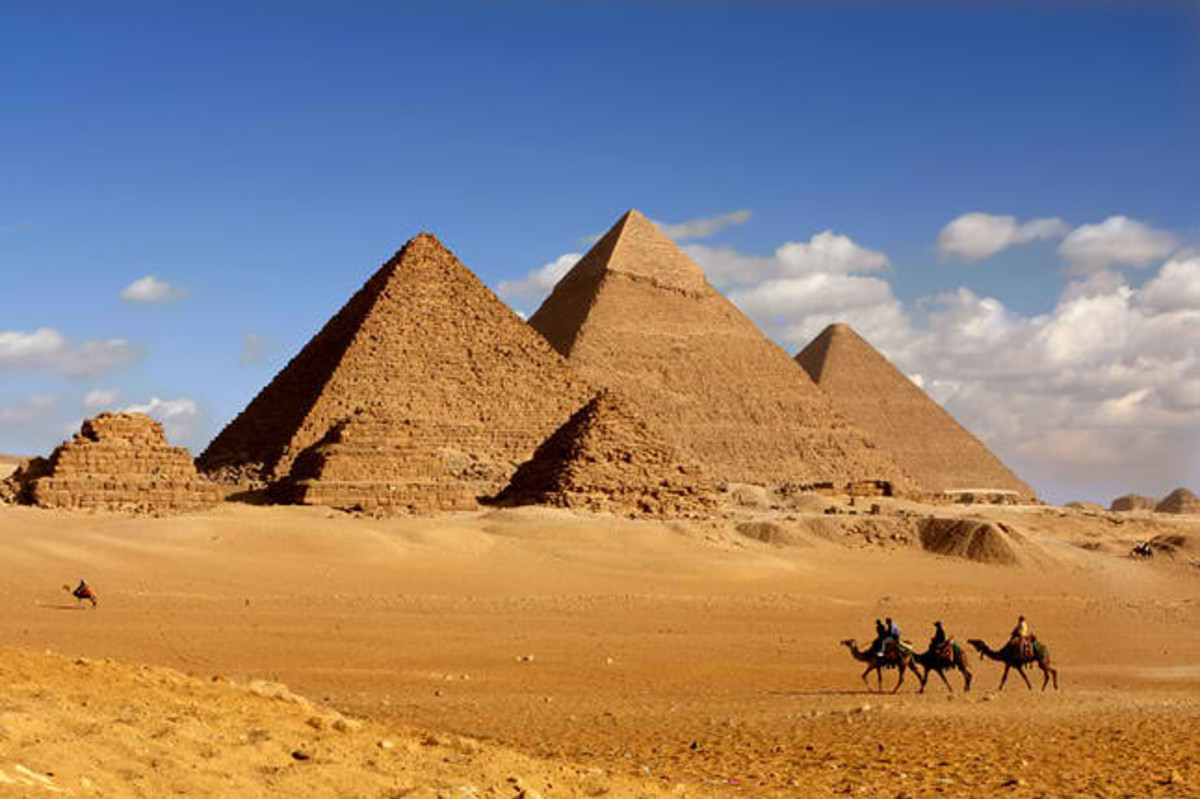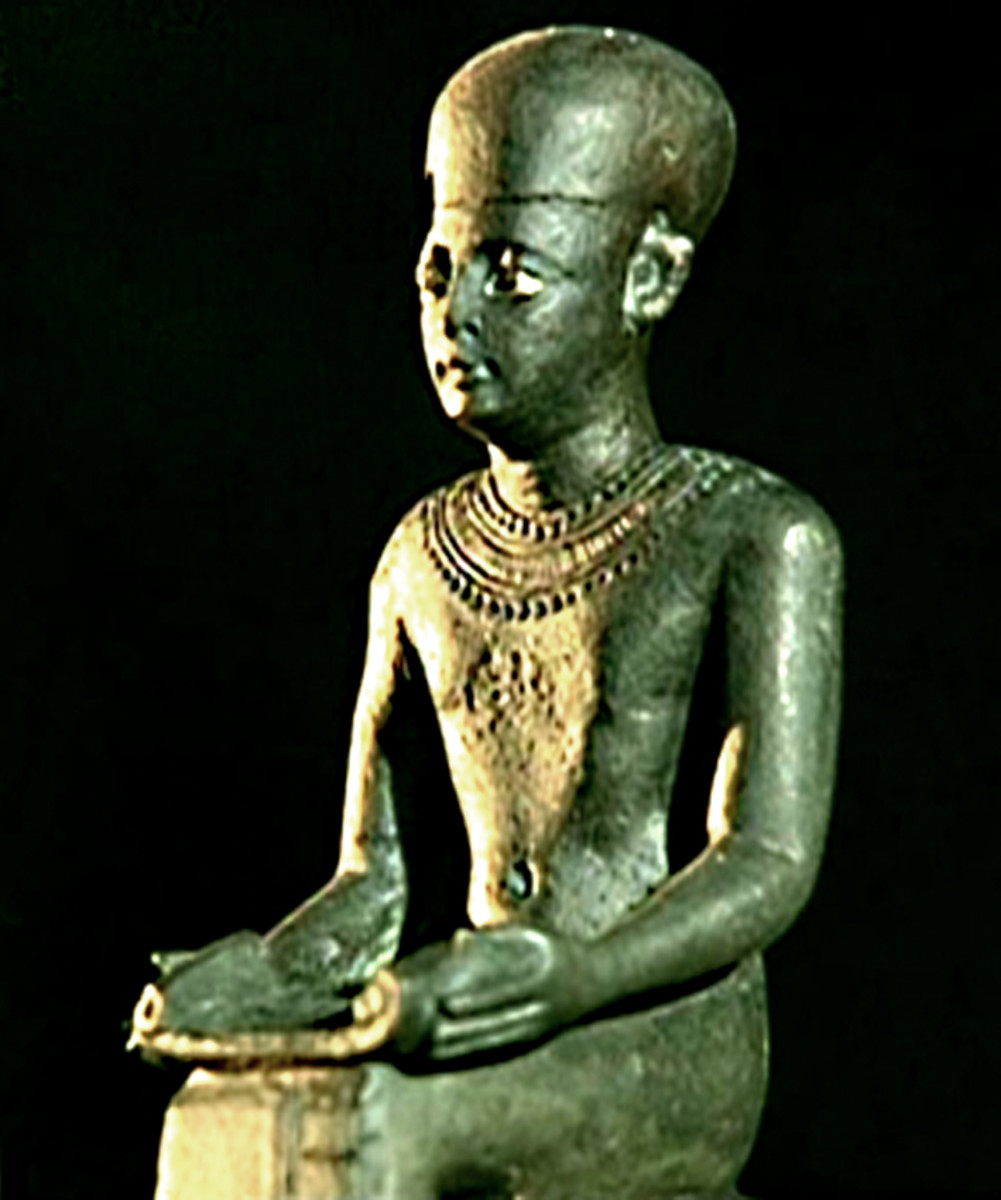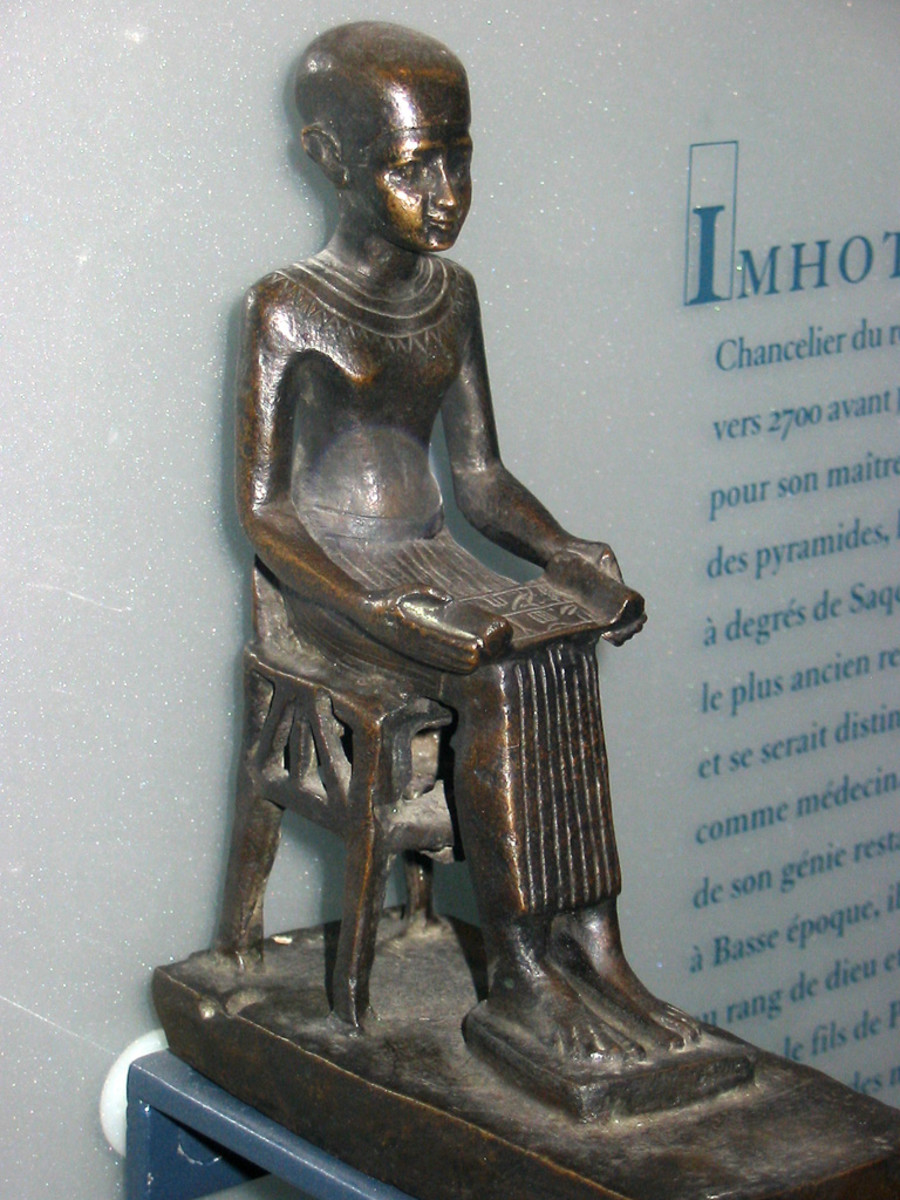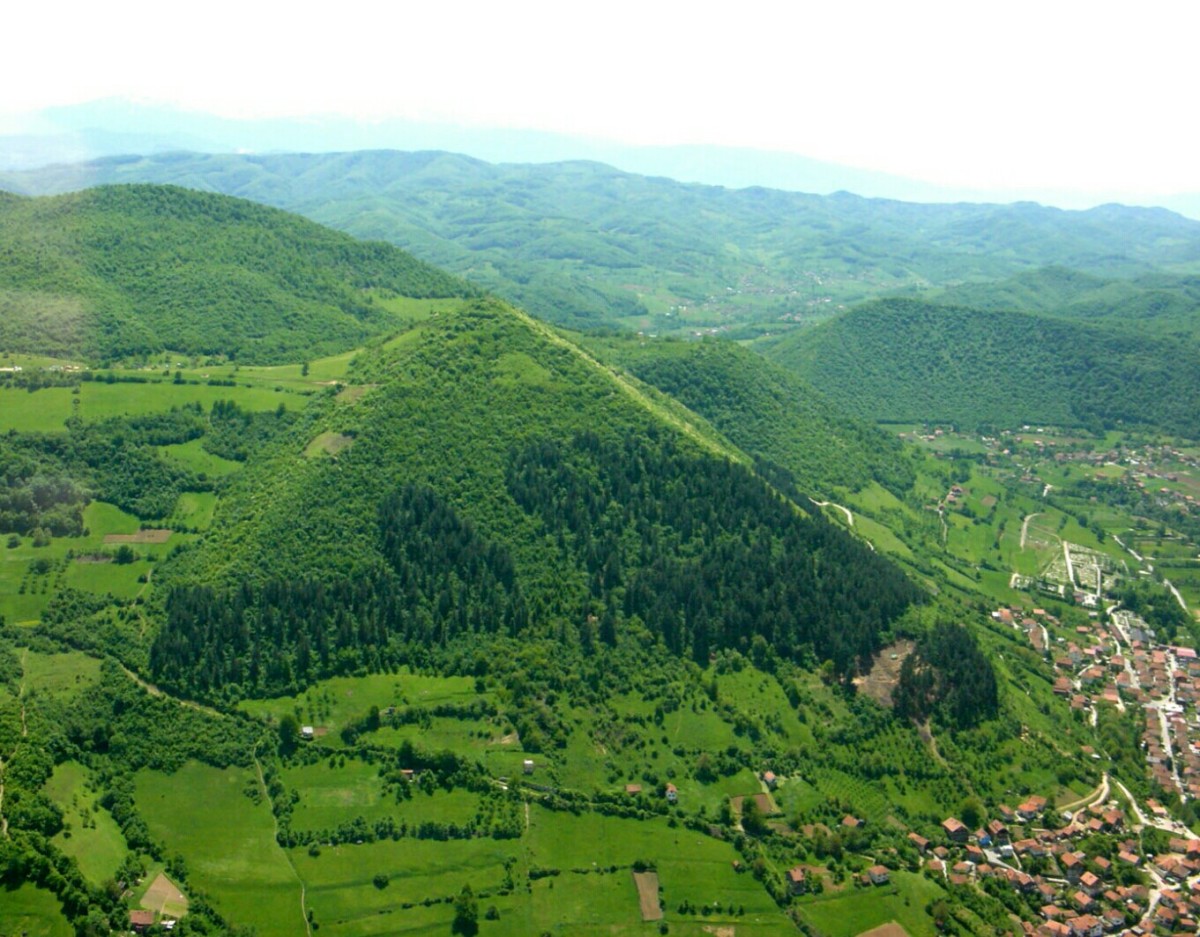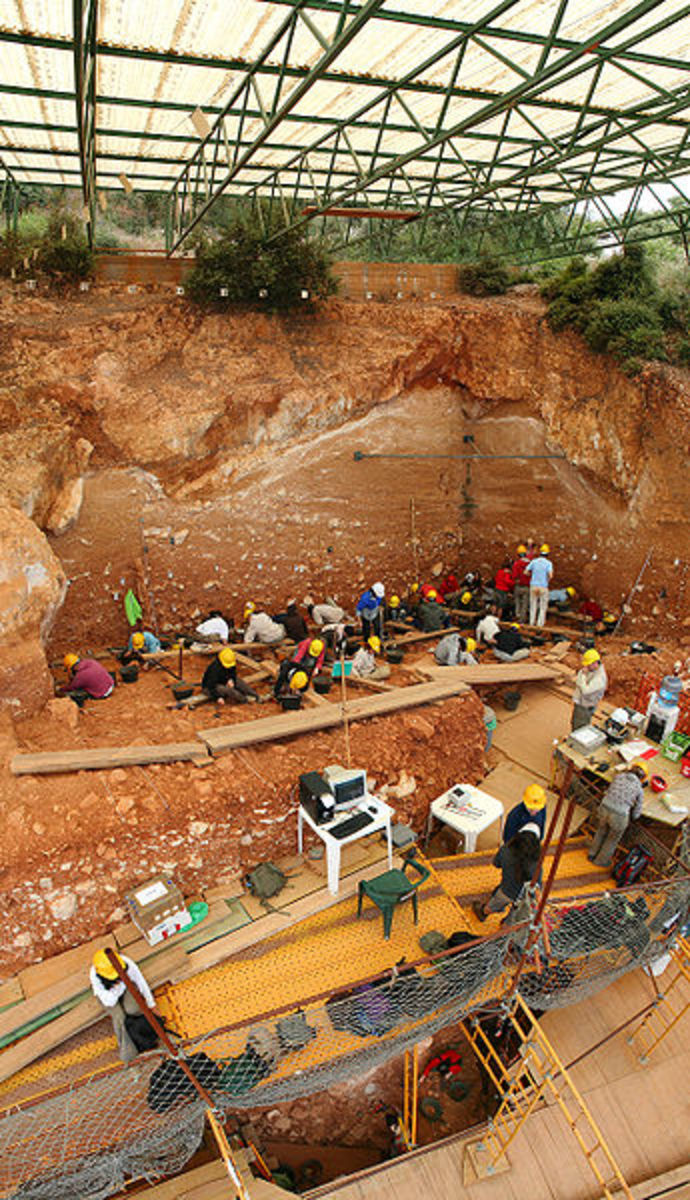- HubPages»
- Education and Science»
- History & Archaeology»
- Archaeology
Historical Landmarks: The Great Pyramid of Giza
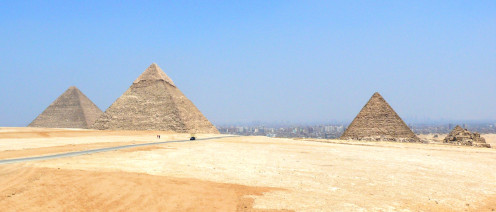
The smallest pyramid was built by Pharaoh Menkaure around 2490 B.C. The second pyramid (see middle) was built by Pharaoh Khafre around 2520 B.C. The last pyramid which is the tallest (the second appears taller because its base was built up 33 ft. higher) was built under Pharaoh Khufu’s rule; The Great Pyramid of Giza.
Brief Overview
The Great Pyramid located at Giza near Cairo, Egypt has ever since secured its position as one of the Seven Wonders of the Ancient World. This stupendous piece of architecture was built around 2550 B.C. under Pharaoh Khufu’s rule. For more than 4,000 years, it gained its reputation as the tallest building in the world up until the early 13th century AD and again from the mid-16th century AD till late 18th century AD. Among the 7 Ancient Wonders, only the Great Pyramid of Giza can now be seen relatively intact, notwithstanding the fact that this “structural wonder” was built long before all the other enlisted Ancient Wonders. For 450 decades and counting, the Great Pyramid has endured to exist on the deserted place of Egypt, exemplifying Egyptians’ advancement in architecture and engineering; leaving an evident mark of great political power and authority.
Architectural Features
It is true that today’s civilization has reached its ascendancy in almost every domain: Science and technology, Mathematics, medicine etc., encompassing the early civilizations. But despite of this huge gap in advancement, the early Egyptian civilization has proven to be exceedingly outstanding during the historical times. This claim is clearly evident in their construction of the Great Pyramid.
- The construction of the Great Pyramid covers a range of 13 acres.
- The four sides at the base of this enormous structure which are perfectly oriented at the four cardinal points of the compass extend 756 feet (230 meters) in length.
- Approximately, each side has no more than 8 inches difference in length.
- The pyramid which originally towers 481 feet (147 meters) up high from its base is incline into an angle of 51O 52’.
- The Great Pyramid was mainly built up using stone blocks.
- Authorities who surveyed the “wonder” noted that the construction of the Great Pyramid had required the production of some 2.3 million stone blocks, each approximately weighing from 2.5 tons to 15 tons.
- Each stone block is being piled up next to each other leaving in-between spaces with great precision.
- The pyramid was once encased with white smooth-surfaced limestone, but the Arabs, in rotten luck on finding Khufu’s treasures, stripped off the white limestone casing and used it in building Cairo.
- Other suggests that at the very top of the pyramid placed a gold-sheathed capstone.
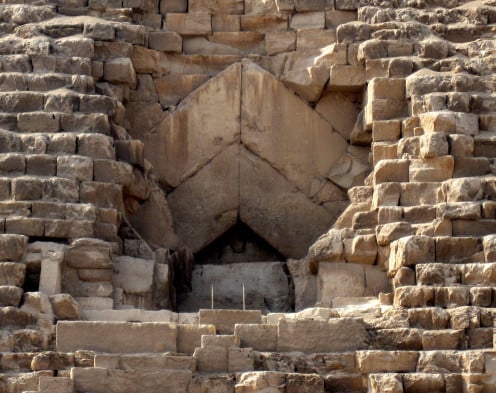
Construction of the Great Pyramid
Up until now, the question of how the pyramid was built remains a mystery. Scientists, engineers and architects are all seem to be uncertain on how the workers had abled to move heavy blocks of stone around the pyramid, piling up each other in nearly perfect precision. However, many theories were brought up, some were ridiculous though. One theory suggests that the workers made huge ramps/inclines enabling them to move block of stones around the pyramid. Wooden ledges were used to carry those stone blocks and levers were used to place the blocks into their final position.
The materials needed for the construction (mainly limestone) which lie in a distant site across the Nile River were transported using ship-vessels. Those limestones were then perfectly made into fine smooth-surfaced blocks.
Modern day idea!
Modern day engineers estimated that it might only take more or less ten years for the Great Pyramid of Giza to build, with an average workforce of 14,000 laborers minimum to 40,000 laborers maximum.
How many laborers did it take to build the Great Pyramid?
Herodotus of Halicarnassus, the Greek Historian and traveler (who is now the Father of History) visited Egypt around 450 BC (20 centuries after the Great Pyramid was built). According to what he wrote in his book (his informants were Egyptian tour guides), it took a workforce of 100,000 oppressed slaves to build the pyramid, spanning a total of 30 years from preparation to completion. On Herodotus’ account, the Egyptians remembered Khufu as a very cruel and tyrant Pharaoh.
But, according to the Egyptian records, laborers were well-fed and were well-taken care of, contrary to what Herodotus had accounted. They were provided with clothing too. On one account, the laborers also only needed to do most of the work for three months every year. This is during the Nile’s annual flood when most people were unemployed, unable to do farming (which is the community’s primary way of living).
What was the Primary Purpose of the Great Pyramid?
- Some people believed that the pyramid was primarily used as astronomical observatories.
- Others said that it could have been used to observe the transits of stars.
- Also thought that it was used for mapping the sky.
Most of the archaeologists, however, deeply believed that the Great Pyramid is primarily intended as a massive royal tomb (for Pharaoh Khufu) just as like the rest of the pyramids. The pyramid also contained treasures and belongings of the Pharaoh which they (early Egyptians) believed are all essential and needed by the Pharaoh in his journey to his next life.
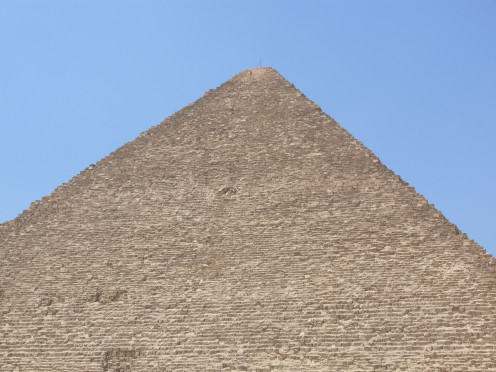
Which of the 7 Ancient Wonders do you think is the most wonderful?
Where are the treasures now?
Archaeologists who explored the pyramid have reported that they found treasures hidden inside. They believe though that most of the treasures had been looted many years ago. They also have accounted that Khufu’s mummy has never been seen or has never been recovered inside the Great Pyramid. This leads to the theory that Pharaoh Khufu’s mummy and treasures have never been touched and for thousands of years have been patiently waiting to be unraveled.
For thousands of years, the Great Pyramid of Giza firmly stands still, has survived the catastrophic violence of nature and has endured the greed-driven wrath of humankind. What’s left now is a scarred “wonder”; a phenomenal work-of-art that leaves us a mystery to unravel.
Is this helpful?
- Historical Landmarks: The Statue of Zeus at Olympia
One of the astonishing structures of classical antiquity is the Statue of Zeus. Built primarily to honor the King of Greek Gods and Goddesses, this humongous figure of the Greek God of Thunder was housed in the Temple of Zeus at Olympia, Greece – whe - Historical Landmarks: Temple of Artemis at Ephesus
The Temple of Artemis, known as one of the 7 Ancient Wonders of the World was built up around the city of Ephesus (located in modern day Turkey). The temple was created to honor the Olympian goddess Artemis, twin sister of Apollo and daughter of Zeus - Historical Landmarks: The Hanging Gardens of Babylon
The Hanging Gardens of Babylon famed as one of the 7 Wonders of the Ancient World is said to be a garden paradise planted on huge quadrangular bricks, seemingly constructed in a terrace-like manner as if a theatre. The “wonder” is believed to be cons
© 2013 LG


